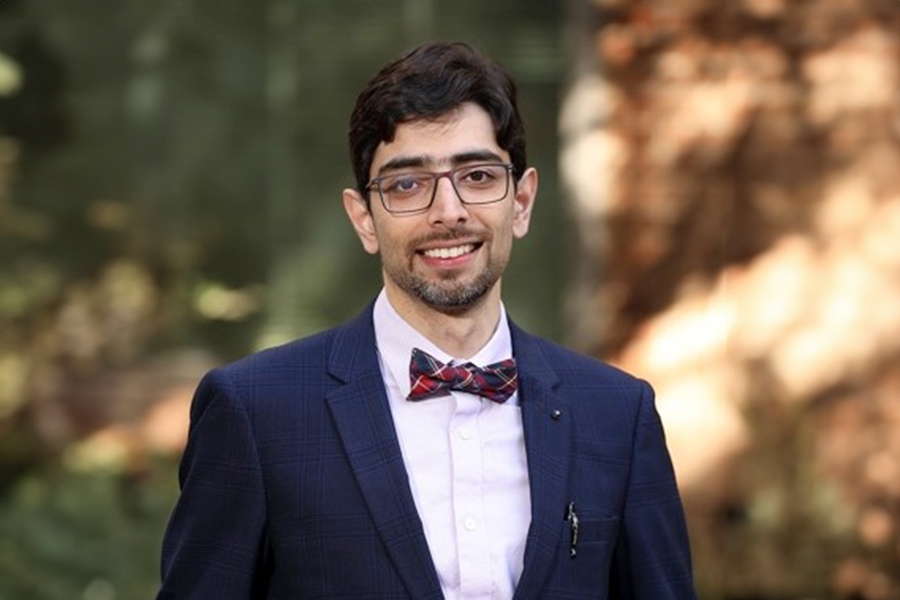
OKLAHOMA CITY, OKLA. – Not all cancer therapies are successful, but cancer researchers increasingly are able to identify the right treatments for the right patients at the right time. A researcher at the University of Oklahoma helped lead a study that made such a discovery, potentially resulting in thousands more cancer patients receiving the specific treatment that will help them the most.
“This study has significant implications because, by changing the tests we use in certain situations, we anticipate that many more people can be accurately diagnosed and receive life-extending therapy,” said medical oncologist Abdul Rafeh Naqash, M.D., an assistant professor of medicine in the OU College of Medicine and research member of the OU Health Stephenson Cancer Center. Naqash was a co-author for the study, which was recently published in the journal Cancer Cell. Amin Nassar, M.D., of Yale Cancer Center was the senior author of the study.
The research compared the data of newly diagnosed cancer patients who received two different types of tests to determine their course of treatment. The tests were looking for high levels of microsatellite instability, which essentially means a person’s DNA has lost the ability to fix its own errors as it replicates. Microsatellite instability is usually found in people with colon cancer and endometrial cancer, and it is important to identify because those patients are much more likely to respond to immunotherapy drugs, which boost the body’s own immune system, rather than to other cancer treatments.
The two tests being studied are called immunohistochemistry (IHC) and next-generation sequencing (NGS). IHC looks for mismatch repair proteins, which normally fix mistakes when DNA is copied but, when deficient, cause microsatellite instability. NGS is a broader approach that tests for genetic mutations associated with microsatellite instability.
After analyzing the data of both tests, it was clear that NGS identified more patients with microsatellite instability. However, in their practices, oncologists use IHC much more often. That suggests that a change in testing could result in more patients receiving the right treatment for their cancers.
Naqash said that in 2022, U.S. oncologists diagnosed 151,030 new cases of colon cancer and 65,950 new cases of endometrial cancer. Had NGS been used in combination with standard IHC testing, doctors
would have discovered microsatellite instability in 1,510 additional cases of colon cancer and 3,891 additional cases of endometrial cancer. That means a total of 5,401 patients with microsatellite instability would have been missed if they received only IHC testing.
“Although IHC catches most cancer patients with high microsatellite instability, it doesn’t identify everyone,” Naqash said, “and we want as many as possible to receive the immunotherapy that can greatly reduce their cancer and, in some cases, eliminate it.”
Naqash said the research will generate important discussions about whether to use NGS instead of, or in combination with, IHC testing. The National Comprehensive Cancer Network recommends that all patients newly diagnosed with gastric and colon cancers be tested for microsatellite instability. Although several medical professional organizations recommend IHC as the preferred method of testing, Naqash anticipates the research will guide the standard of care toward NGS.
“For the past several years, I have been working in this space of identifying biomarkers (like microsatellite instability in this study) that help in the selection of appropriate patients for appropriate therapies,” he said. “My firm belief is that if we have the right biomarkers for the right individual, we can tailor therapy, minimize toxicity and optimize efficacy.”
About the Project
The study published in Cancer Cell publication is found at https://doi.org/10.1016/j.ccell.2024.01.009.
About the University of Oklahoma
Founded in 1890, the University of Oklahoma is a public research university located in Norman, Oklahoma. As the state’s flagship university, OU serves the educational, cultural, economic and health care needs of the state, region and nation. OU was named the state’s highest-ranking university in U.S. News & World Report’s most recent Best Colleges list. For more information about the university, visit ou.edu.